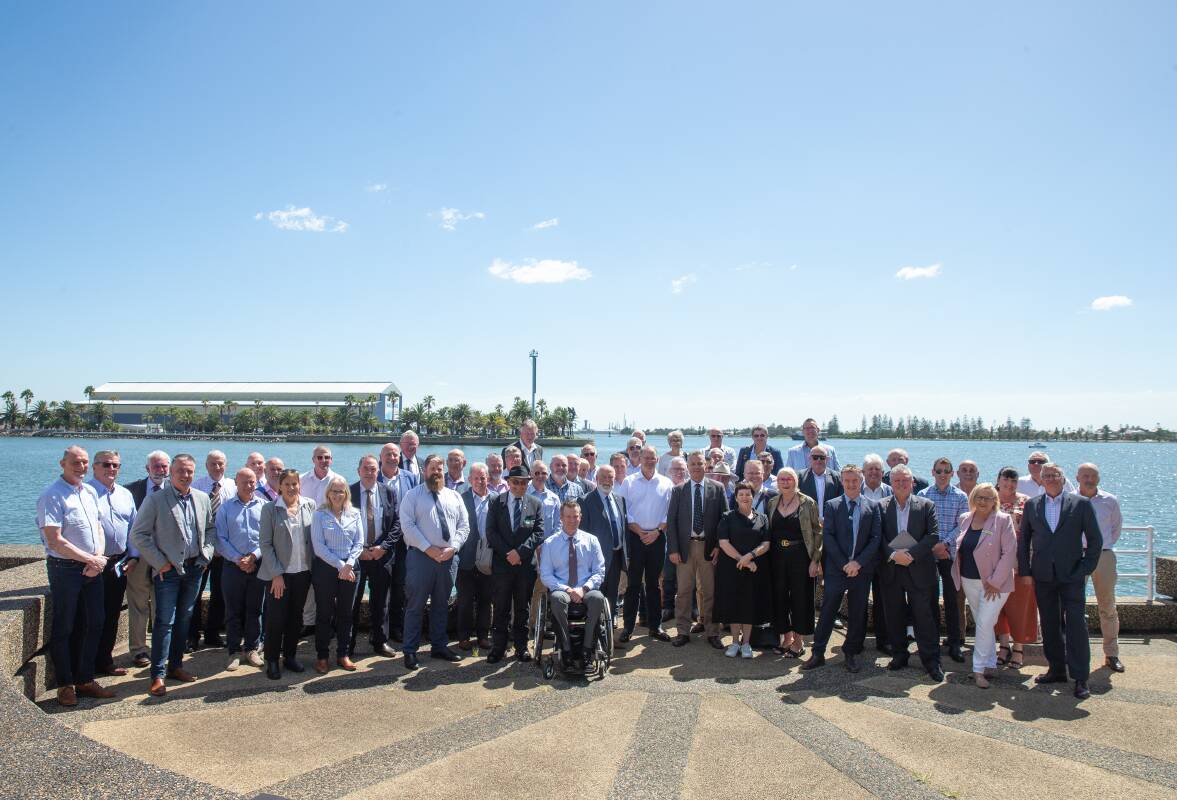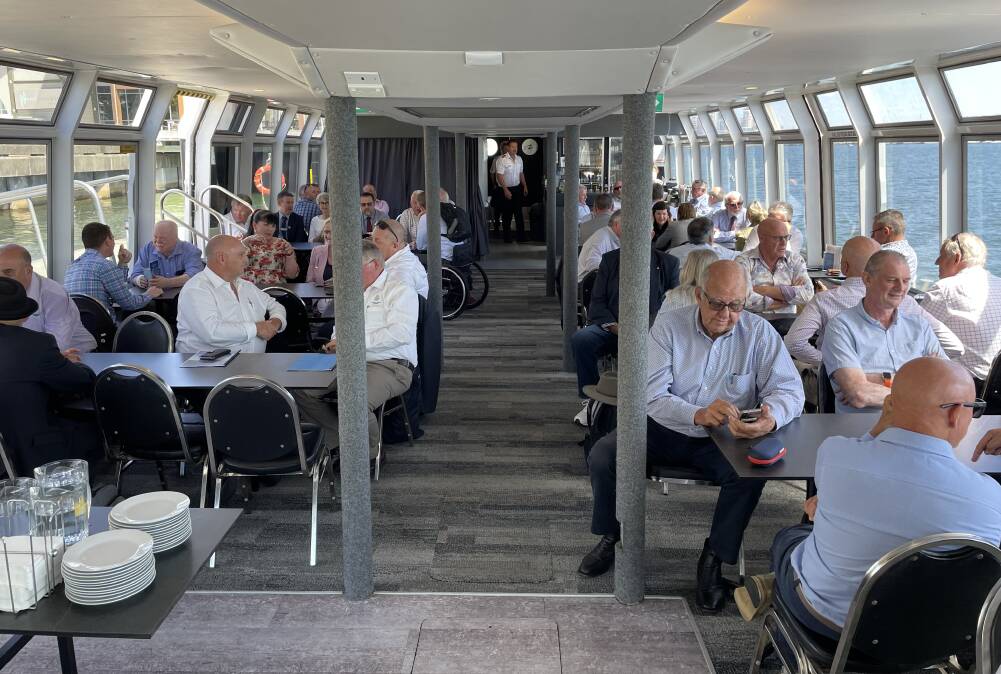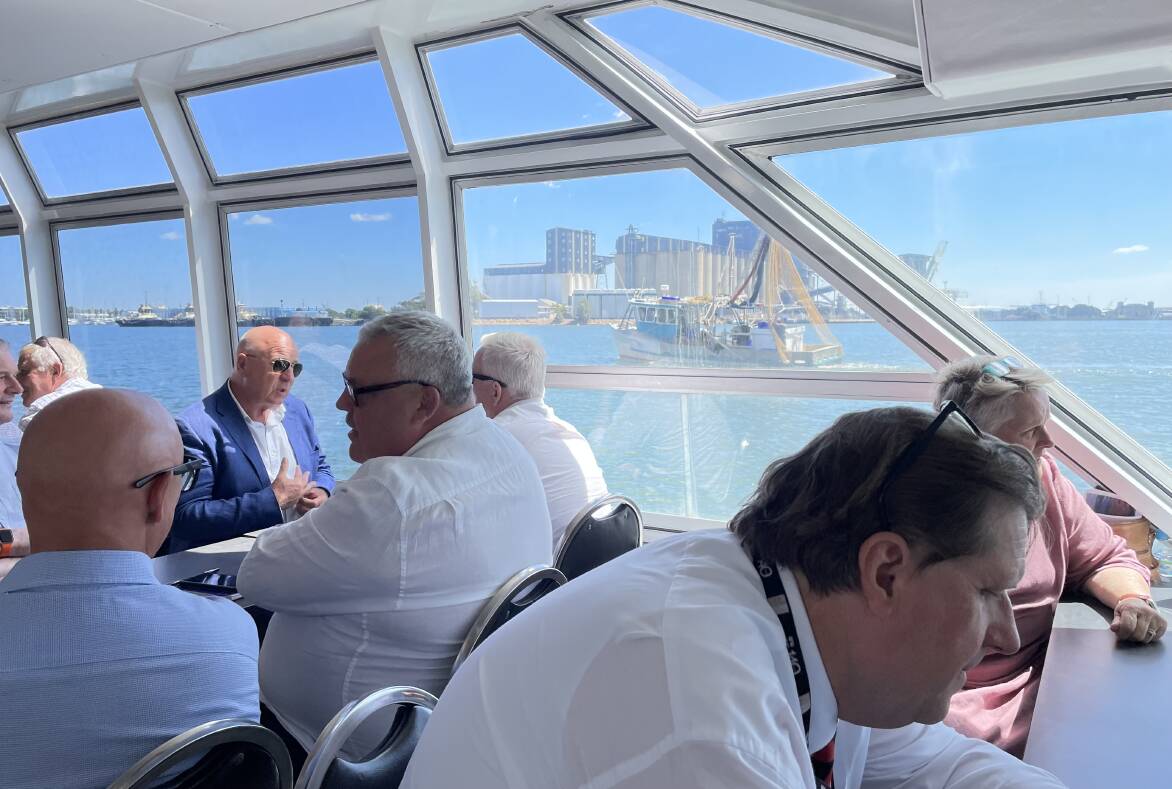
COUNTRY mayors who toured the Port of Newcastle say a Newcastle container terminal would mesh with the Inland Rail when it connected with the line between Newcastle and Narrabri.
The Port of Newcastle played host today to a delegation from the Country Mayors Association of NSW, which has been chaired since November by the Mayor of Gunnedah Shire, Cr Jamie Chafey.
They were hosted on a port cruise by Port of Newcastle CEO Craig Carmody.
Cr Chaffey said the association usually held its quarterly meetings in Sydney to enable it to get its message across more easily to state parliamentarians, but a new executive had decided to move the meetings around.
Cr Chaffey said 92 of the state's 128 local councils were eligible to join the Country Mayors Association. He said 79 were members, with more expected to join soon.
He said 35 councils were represented at the Newcastle meeting, mostly by mayors and council chief executives.
He said the City of Newcastle was not eligible for membership, but said Newcastle lord mayor Nuatali Nelmes had asked about Newcastle joining as an associate member, and this would be considered.
Local councils are also represented by Local Government NSW, formed in 2013 as a merger of the Local Government Association and the Shires Association.
Although Justice Jagot in the Federal Court described Newcastle's container terminal prospects as "speculative ... far-fetched and fanciful", the privatised Port of Newcastle remains adamant that its business model is viable.

Both Port of Newcastle and the Botany/Port Kembla operator NSW Ports are waiting for a determination of a compensation figure that Newcastle would have to pay to extinguish the initially secret container "penalty payments" exposed by the Newcastle Herald in 2016.
This follows the Port of Newcastle Extinguishment of Liability Act 2022, passed late last year, which was introduced by Lake Macquarie MP Greg Piper.
NSW Ports trade reports show that last financial year, Botany imported 1,415,535 containers and exported 1,381,188; of these, 523,108 were full and 858,080 were empty.
Port of Newcastle's container terminal plans involve a three-stage construction, starting with an initial capacity of more than 200,000 "20-foot-equivalent units" or TEUs - the standard measure for containers - and finishing with 1500 metres of continuous berth space and a capacity of 2 million TEU a year.
Attracting agricultural products and non-coal mineral output from the "natural catchment" area the port sees as its own - mainly west and north of Newcastle - has been a major part of its pitch in recent years.
In its submission to a NSW government committee inquiry on the inland rail, Port of Newcastle said it was "uniquely connected" to the inland rail at Narrabri and Narromine through the Hunter Valley rail network, which, like the Inland Rail, is run by the federal Australian Rail Track Corporation.
The port says this link would free up rail space on the line between Sydney and Newcastle and provide cheaper transport for northern NSW producers presently exporting through Sydney or Brisbane.
The federal government describes the inland rail as a 1700-kilometre route linking Brisbane to Melbourne, split into seven projects in NSW, five in Queensland and one in Victoria.
In NSW a series of "Special Activation Precincts" (including one at Williamtown) are being advertised by the government as recipients of proceeds from the state's $4.2 billion sale of its share of Snowy Hydro.
Parkes Shire mayor Cr Ken Keith said Parkes was the first precinct to be funded.
However, the National Logistics Hub set up there - described as providing "access to 80 per cent of Australia's markets within 12 hours by road or rail when the inland rail is operating" - is closer to Botany than Sydney by rail.

To see more stories and read today's paper download the Newcastle Herald news app here.







